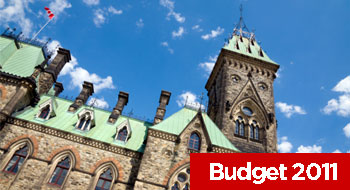

A Guaranteed Income Supplement (GIS) top-up of $50 a month for singles and $70 a month for couples and the elimination of the mandatory retirement age for federally regulated employees are not enough to improve the quality of life and increase opportunities for Canadian seniors.
This generally sums up the immediate reaction of the financial services industry with regards to the federal budget released by Finance Minister Jim Flaherty on Tuesday, March 22.
From a senior’s perspective it is more of a stay-the-course budget than anything more substantial says Tina Di Vito, head of the BMO Retirement Institute.
“There isn’t really a lot in here for seniors and retirees,” she said. “It almost looks like stay-the-course that fixes a few things and tweaks here and there; there wasn’t anything significant, but I’m certainly glad that they didn’t make any changes to existing programs that are already in place.”
The additional $300-million bump to the GIS for seniors is expected to benefit some 680,000 senior Canadians, an important segment of the electorate, when it comes into effect July 1.
But Di Vito promptly points out that it only helps very low income earners and, worse, half of it is clawed back. “At the very first dollar an individual earns, the GIS is clawed back at the rate of 50%.”
It is pretty much like the Old Age Security (OAS), except that the threshold limit for the GIS is zero income, she adds. However, those who earn the OAS and the GIS, and no other income, will get their full entitlement to the GIS.
The Next Phase of Canada’s Economic Action Plan detailed that single recipients with an annual income (other than OAS and the GIS) of $2,000 or less, and couples with an annual income of $4,000 or less, will receive the full amount of the benefit.
“Above these income thresholds, the amount of the top-up will be gradually reduced and will be completely phased out at an income level of $4,400 for singles and $7,360 for couples.”
The GIS currently provides additional money, over and above the OAS pension, to about 1.6 million low-income seniors in Canada.
Richard Knowles, financial planner, R. Knowles & Associates, Vancouver, called today’s budget “lacklustre” and termed it as an “election friendly” budget. “One with little news or excitement and a steady-as-she-goes approach, which has been the call of most that have followed the general trend of this Harper government,” said Knowles. “There are a few helpful issues but the vast majority of support in this budget is going to Canadian business.”
One good thing for seniors and low-income people as a whole is the personal exemption for income tax to all Canadians has risen to $10,382. “This is great for everyone and saves tax to those that need it most; the Conservatives are counting on some votes for this one,” says Knowles.
There are indeed some key elements lacking in the budget, as Di Vito points out. They include increases in the age limit to convert from the registered educational savings plan to the registered retirement income fund (RRIF) and provision for pension income splitting if individuals “who don’t have a defined benefit pension plan coming before age 65, but have a RRIF before 65.”
Di Vito and Knowles are not alone in feeling the budget short-changed the nation’s senior population.
“I feel the budget is really more about politics than good policies that are designed to [create] an environment that’s productive and supports seniors income,” says Angela Maitland, vice-president and portfolio manager, Fiduciary Trust Company of Canada. “I’d argue that it is really very close to asking seniors to live in poverty and still pay taxes.”
A single senior starts paying taxes when their monthly income exceeds $1,589, an amount that Maitland asserts doesn’t go far these days. “Broadly speaking, there’s a lack of imagination or initiative in terms of creating a framework to support a better quality of life for seniors in general.”
There are some other minor tweaks in the budget that made for modest but meaningful improvement to the lives of senor citizens. One of them is the introduction of a new Family Caregiver Tax Credit, a 15% non-refundable credit on an amount of $2,000 that will provide tax relief to caregivers of all types of infirm dependent relatives including, for the first time, spouses, common-law partners and minor children.
“That translates into $300 a year for caregiver, that’s positive, but I’d question if it’s meaningful,” says Maitland.These measures, while regarded as improvement, are not likely to improve the livelihood of seniors living close to poverty.”
